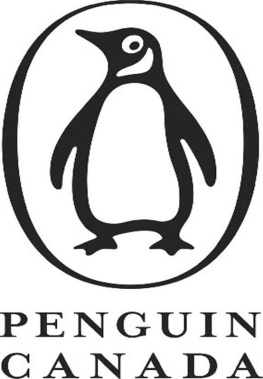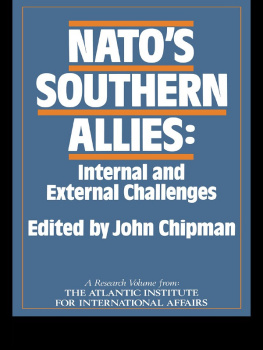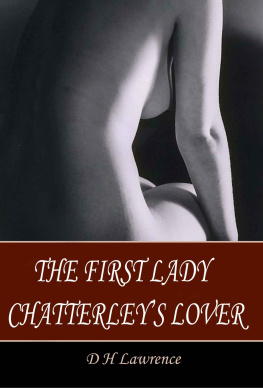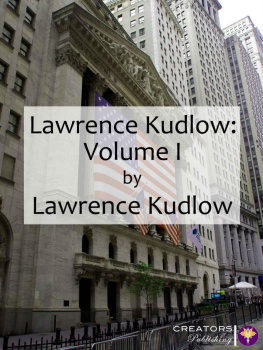UNIVERSITY PRESS OF NEW ENGLAND publishes books under its own imprint and is the publisher for Brandeis University Press, Dartmouth College, Middlebury College Press, University of New Hampshire, Tufts University, and Wesleyan University Press.
University Press of New England, Hanover, NH 03755
1966 by Brown University
All rights reserved
Maps in this book were drawn by Sam H. Bryant, Marblehead, Massachusetts.
LIBRARY OF CONGRESS CATALOGING-IN-PUBLICATION DATA
Lawrence, Mary Chipman, 1827
The captains best mate.
Includes index.
1. Lawrence, Samuel. 2. Whalers (Persons)
MassachusettsBiography. 3. Lawrence, Mary Chipman,
1827 . 4. Whalers wivesMassachusetts
Biography. I. Garner, Stanton. II. Title.
SH20.L38L38 1986 639.280922 [B] 8340018
ISBN 0-87451-366-9
ISBN 978-1-6116-8063-8 (ebook)
PREFACE
Mary Chipman Lawrence wrote her journal during a three and one-half year whaling voyage, and it is in her narrative that this books interest lies. However, in the Introduction, Epilogue, Appendixes, and Notes I have attempted to add as much circumstantial information about her experience as is practicable and relevant, for the purpose of placing this single whaling voyage in the larger context of the busy Pacific Ocean of the 1850s. For this information I am indebted to a number of sources besides such standard works as Alexander Starbucks History of the American Whale Fishery.
The most remarkable and unexpected source is a rare tract by Mrs. Helen E. Brown, A Good Catch; or, Mrs. Emersons Whaling-Cruise, published in Philadelphia in 1884 by the Presbyterian Board of Publication. This Christian tale was inspired by letters and a visit to Mrs. Lawrence from one of the Addisons crew many years after the Civil War, when the voyage itself was a dimming memory. The crewman was Edward Leighton, a runaway English boy from London, who had given his address in the Addisons shipping articles as St. Johnsbury, Vermont. Leighton credited the Lawrences with reconciling him with his family, claiming that the presence of the mother and daughter on the ship had set him once again to thinking of his loved ones at home. As a result, he had returned to England and made peace with his parents, and by the time of his visit to the Lawrences Brooklyn home he had become a respected merchant ship officer. Mrs. Brown, a minor but prolific author of inspirational tracts with whom Mrs. Lawrence had become acquainted, was so captivated by the adventurous voyage and its evangelical outcome that, with some advice and guidance from Mrs. Lawrence, she constructed the plot of A Good Catch on the framework of the journal and the Leighton incident. It was perhaps inevitable that in the process the genuine, dependable Leighton, who had on more than one occasion during the voyage rendered indispensable services to Captain Lawrence, was transmuted into a neer-do-well lad named Aleck Fielding who, prior to his reclamation, was perpetually in trouble aboard ship and ashore. Many of the passages of the book are direct quotations from the journal; others seem to be based on Mary Lawrences own recollections and are included in the Notes and Appendixes. A Good Catch was discovered almost by accident in the valuable Morse Whaling Collection of the Brown University Library.
A journal kept by George L. Bowman during the last cruise of the voyage has also been used to amplify Mrs. Lawrences journal. Bowman, a native of Falmouth, had by coincidence sailed from Fairhaven as a boatsteerer aboard the Sharon on the day of the Addisons departure from New Bedford, across the Acushnet River. Captain Lawrence shipped him for a cruise and home during the Addisons last stop at the Sandwich Islands, promoting him to third mate in the process (apparently as a favor, since he could then sign on his next whaler as an officer). His journal (and another journal he kept aboard the Sharon) is now in the Nicholson Whaling Collection of the Providence (Rhode Island) Public Library.
Mrs. Lawrences journal was written on the tall blue pages (8 by 13-5/16 inches) of two otherwise blank books of the sturdy type used for whaling logs. Writing in a neat but compact hand, with the elaborate capital letters of her era, she filled 160 pages of the first volume and 60 pages of the second. She was an educated, naturally gifted stylist. It has therefore seemed appropriate to normalize her few departures from modern usage in spelling, capitalization, and punctuation (but not in grammar) and to correct silently her rare slips of the pen. These principles have also been followed in transcribing all other manuscript materials which appear in the Appendixes and Notes. However, modern equivalents have not been substituted for archaic geographical terms. (See the Glossary of Obscure Geographical Terms, .)
Mr. Francis F. Jones, of Palto Alto, California, first brought the manuscript to my attention. It had reached Mr. Jones, grandson of Mrs. Lawrences brother Charles Chipman, through his family and is now on deposit in the Nicholson Collection. Mr. Jones, through whose courtesy the journal has been published, also provided me with a great deal of background material, a letter from Charles Chipman to Mrs. Lawrence, and two photographs of Mrs. Lawrence and Minnie.
Two other persons have been of particular assistance. Mrs. Ruth W. Sterling, the gracious and resourceful secretary of the Falmouth Historical Society, has been a steady source of information and encouragement throughout the preparation of this edition. She was able to provide me with the private account or slop book of Samuel Lawrence (also used on other voyages by his brothers, paper being scarce) and other papers in the archives of the Society, and with two photographs of the Lawrences, which she located after all hope of finding them had been abandoned. In addition to her time and materials, Mrs. Sterling also contributed recollections of Mrs. Lawrence, Minnie, and the last of the aging Falmouth whaling captains. Mr. Carleton R. Richmond, of Little Compton, Rhode Island, grandson of the Addisons agent, generously allowed me to inspect and use the marvelously detailed records of the voyage and provided certain facts about his grandfather, Deacon Isaac Bailey Richmond.
Mr. Reginald B. Hegarty, curator of the Melville Whaling Room of the New Bedford Free Public Library and the major source of first-hand whaling information in the country, has rendered invaluable assistance with his knowledge and memories of whaling and with his remarkable records of the industry. Mr. Grant Dugdale, director of the Brown University Press, and Professor Robert C. Kenny of Brown University have been most helpful with their counsel about various aspects of this edition, as has Mr. Stuart C. Sherman, librarian of the Providence Public Library, through whose courtesy portions of the journal of George L. Bowman are included here. The scrupulous eye and lively imagination of Mrs. Sandra Magrath of the Brown University Press have been indispensable.








![D. H. Lawrence [Lawrence - Sons and Lovers [Annotated Version]](/uploads/posts/book/61295/thumbs/d-h-lawrence-lawrence-sons-and-lovers.jpg)

